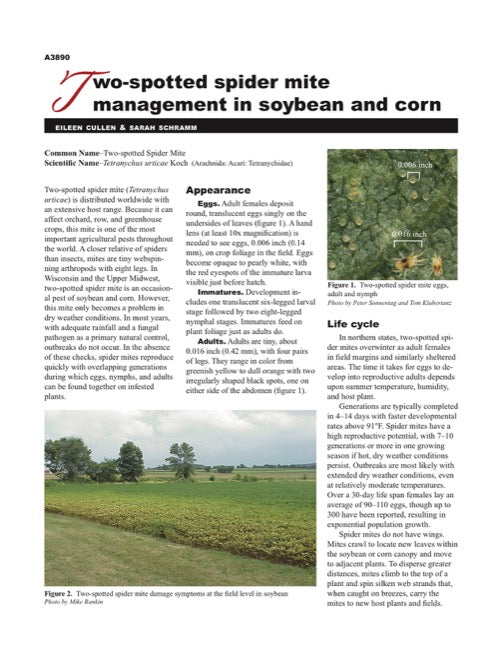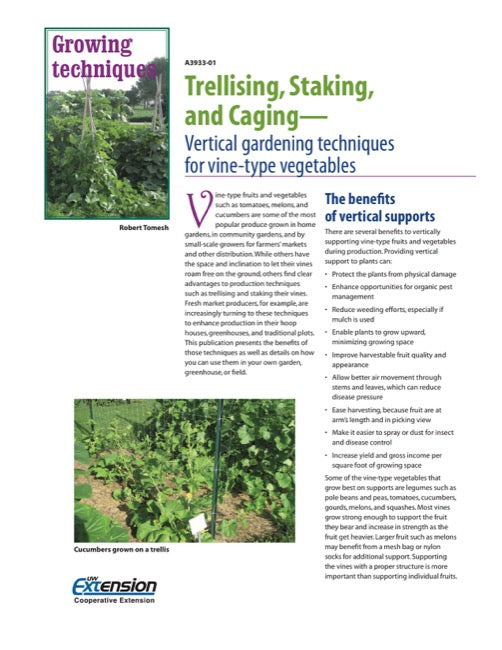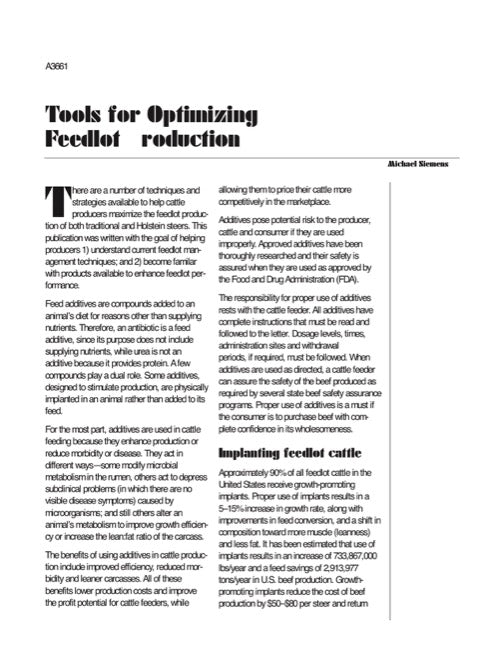Filters
Agriculture
-
 $0.00
$0.00Understanding Plant Nutrients: Soil and Applied Zinc
Author(s) Emmett Schulte. Plants vary considerably in their requirements for zinc. In Wisconsin, zinc deficiencies have been observed on corn, sna...
View full details$0.00 -
 $0.00
$0.00Understanding Plant Nutrients: Soil and Applied Sulfur
Author(s) Emmett Schulte, Keith Kelling. Although sulfur is described as a secondary plant nutrient, largely because it is not deficient as often ...
View full details$0.00 -
 $0.00
$0.00Understanding Plant Nutrients: Soil and Applied Potassium
Author(s) Emmett Schulte, Keith Kelling. Most Wisconsin soils need relatively large quantities of applied potassium because of removal by crops an...
View full details$0.00 -
 $0.00
$0.00Understanding Plant Nutrients: Soil and Applied Phosphorus
Author(s) Emmett Schulte, Keith Kelling. Although some Wisconsin soils may require large phosphorus additions for best yields, the past use of pho...
View full details$0.00 -
 $0.00
$0.00Understanding Plant Nutrients: Soil and Applied Nitrogen
Author(s) Larry Bundy. Find out how nitrogen reacts in your lawn or garden and how to test for and apply it (6 pages; Revised in 1998). Download
$0.00 -
 $0.00
$0.00Understanding Plant Nutrients: Soil and Applied Molybdenum
Author(s) Emmett Schulte. Molybdenum (Mo) was identified as an essential element for higher plants in 1939. Find out how this mineral can affect y...
View full details$0.00 -
 $0.00
$0.00Understanding Plant Nutrients: Soil and Applied Manganese
Author(s) E.E. Schulte, K.A. Kelling. Manganese (Mn) deficiency and toxicity have been noted in Wisconsin on various soils. Find out how this mine...
View full details$0.00 -
 $0.00
$0.00Understanding Plant Nutrients: Soil and Applied Magnesium
Author(s) Emmett Schulte. Magnesium (Mg) is abundant in most Wisconsin soils. Find out how this mineral can affect the soil in your lawn or garden...
View full details$0.00 -
 $0.00
$0.00Understanding Plant Nutrients: Soil and Applied Iron
Author(s) Emmett Schulte. Find out how iron, the fourth most-abundant element on earth, can affect the soil in your lawn or garden (2 pages; 1999)...
View full details$0.00 -
 $0.00
$0.00Understanding Plant Nutrients: Soil and Applied Copper
Author(s) Emmett Schulte, Keith Kelling. Copper deficiencies are rare in Wisconsin. Most verified cases have involved small grains, lettuce, or on...
View full details$0.00 -
 $0.00
$0.00Understanding Plant Nutrients: Soil and Applied Chlorine
Author(s) Emmett Schulte. The names chlorine and chloride are frequently confused. The non-reactive chloride is the form present in soils and is t...
View full details$0.00 -
 $0.00
$0.00Understanding Plant Nutrients: Soil and Applied Calcium
Author(s) Emmett Schulte, Keith Kelling. Calcium (Ca) is relatively abundant in soils and rarely limits crop production. Find out how to test for ...
View full details$0.00 -
 $0.00
$0.00Understanding Plant Nutrients: Soil and Applied Boron
Author(s) Keith Kelling. Boron (B) deficiencies in Wisconsin are more widespread than deficiencies of any other micronutrient. Soils may contain 0...
View full details$0.00 -
 $0.00
$0.00Understand the Carbon Footprint of Cheese: Sustainable Cheese Production
Author(s) Horacio Aguirre-Villegas, Simone Kraatz, Franco Milani, Astrid Newenhouse, Thais Passos-Fonseca, Doug Reinemann. The process of making ...
View full details$0.00 -
 $0.00
$0.00Two-spotted Spider Mite Management in Soybean and Corn
Author(s) Eileen Cullen, Sarah Schramm. In Wisconsin and the Upper Midwest, the two-spotted spider mite is an occasional pest of soybean and corn ...
View full details$0.00 -
 $0.00
$0.00Tuber Maturation and Potato Storability: Optimizing skin set, sugars, and solids
Author(s) Alvin J. Bussan, Robert P. Sabba, Michael J. Drilias. Maximizing the value of the stored potato crop in Wisconsin requires careful crop ...
View full details$0.00 -
 $0.00
$0.00Troubleshooting High Bacteria Counts in Farm Milk
Author(s) Douglas Reinemann, Graeme A. Mein, David R. Bray, David Reid, Jenks S. Britt. The procedures described in this publication are designed ...
View full details$0.00 -
 $0.00
$0.00Trellising, Staking, and Caging
Author(s) Robert Tomesh. Vine-type fruits and vegetables—such as tomatoes, melons, and cucumbers—are some of the most popular produce grown. Vari...
View full details$0.00 -
 $0.00
$0.00Tree-of-Heaven
Author(s) Brendon Panke, Mark Renz. Invasive plants can thrive and aggressively spread beyond their natural range, disrupting ecosystems. The Mana...
View full details$0.00 -
 $0.00
$0.00Treating and Disposing of Milking Center Wastewater
Author(s) David C. Payer, Brian J. Holmes. This fact sheet discusses options for handling milking center wastewater and provides background inform...
View full details$0.00 -
 $0.00
$0.00Training Systems for Cold Climate Hybrid Grapes in Wisconsin
Author(s) Amaya Atucha, Madeline Wimmer. Cold climate hybrid grape cultivars differ from European grape cultivars in several respects and require ...
View full details$0.00 -
 $0.00
$0.00Training and Pruning Apple Trees
Author(s) T. R. Roper. Proper training and pruning help to maximize the production of high-quality apples. This illustrated guide shows how and w...
View full details$0.00 -
 $0.00
$0.00Toxic Plants in Midwest Pastures and Forages
Author(s) Anders Gurda, Peg Reedy, Mark Renz. Prevention is the best way to avoid toxicity problems in forages. While most plants are safe for liv...
View full details$0.00 -
 $0.00
$0.00Tools for Optimizing Feedlot Production
Author(s) Michael Siemens. Covers techniques and strategies to help cattle producers maximize feedlot production of both traditional and Holstein ...
View full details$0.00
























